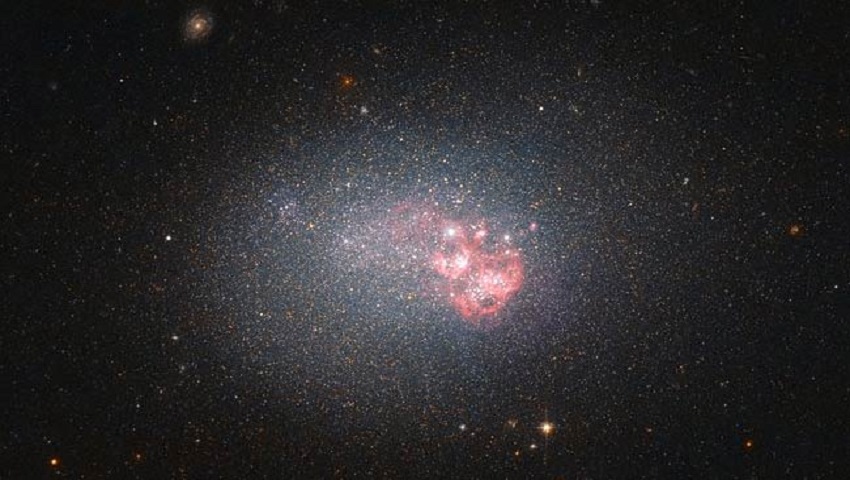
Links to photos are more likely to be retweeted than others. There's probably several reasons for that. I tweeted a link to it, and while I expected some retweets, I was surprised to see its spread - I think it's probably the single most retweeted tweet I have ever written. I'm very grateful to be a member of the very few generations of humanity that have ever lived who are (a) capable of creating radio broadcasts and (b) realizing how much more of the universe there is beyond what we've experienced. Some people describe this as humbling, but for me, I see it as just the beginning. “Future telescopes promise to discover thousands of FRBs a month, and at that point we may find many more of these periodic signals.Gives you perspective, doesn't it? Actually, I'm a little surprised that the dot shows up on this image at all. “This detection raises the question of what could cause this extreme signal that we’ve never seen before, and how can we use this signal to study the universe,” Michilli said. The frequency of the radio waves and how they change could be used to help astronomers learn more about the rate of the universe’s expansion. The research team will continue to use CHIME to monitor the skies for more signals from this radio burst, as well as others with a similar, periodic signal. “We think this new signal could be a magnetar or pulsar on steroids,” Michilli said. The fast radio burst appears to be more than a million times brighter than these emissions. Both stellar objects create a signal akin to the flashing beam from a lighthouse. Magnetars are neutron stars with incredibly powerful magnetic fields, while radio pulsars release radio waves that appear to pulse as the neutron star rotates. When the researchers analysed FRB 20191221A, the signal was similar to the emissions released by two different types of neutron stars, or the dense remnants after a giant star dies, called radio pulsars and magnetars. From the properties of this new signal, we can say that around this source, there’s a cloud of plasma that must be extremely turbulent.” The exact location and cause of the fast radio burst is unknown. “We’ve seen some that live inside clouds that are very turbulent, while others look like they’re in clean environments. “CHIME has now detected many FRBs with different properties,” Michilli said. However, CHIME is being upgraded through a project where additional telescopes, currently under construction, will observe together and be able to triangulate radio bursts to specific galaxies, he said.īut the signal does contain clues about where it came from and what may have caused it.

While CHIME is primed to search for bursts of radio waves, it’s not as good at locating their origin points. The research team doesn’t know the exact galaxy from which the burst originated and even the distance estimate of a billion light-years is “highly uncertain,” Michilli said. UFO captured on NT dashcam sparks debate. The signal, named FRB 20191221A, lasted for up to three seconds - which is about 1000 times longer than typical fast radio bursts.

Credit: APĪstronomers using CHIME spotted something on December 21, 2019, that immediately caught their attention: a fast radio burst that was “peculiar in many ways,” according to Daniele Michilli, a postdoctoral researcher in the Massachusetts Institute of Technology’s Kavli Institute for Astrophysics and Space Research. The Canadian Hydrogen Intensity Mapping Experiment, or CHIME, at the Dominion Radio Astrophysical Observatory in British Columbia, Canada.

This telescope, in operation since 2018, constantly observes the sky and, in addition to fast radio bursts, is sensitive to radio waves emitted by distant hydrogen in the universe. One resource used to spot them is a radio telescope called the Canadian Hydrogen Intensity Mapping Experiment, or CHIME, at the Dominion Radio Astrophysical Observatory in British Columbia, Canada. Many FRBs release super bright radio waves lasting only a few milliseconds at most before disappearing completely, and about 10 per cent of them have been known to repeat and have patterns.įast radio bursts are so quick and unexpected that they’re difficult to observe.
#Russian received radio signal from space for free#
Watch the latest News on Channel 7 or stream for free on 7plus >


 0 kommentar(er)
0 kommentar(er)
